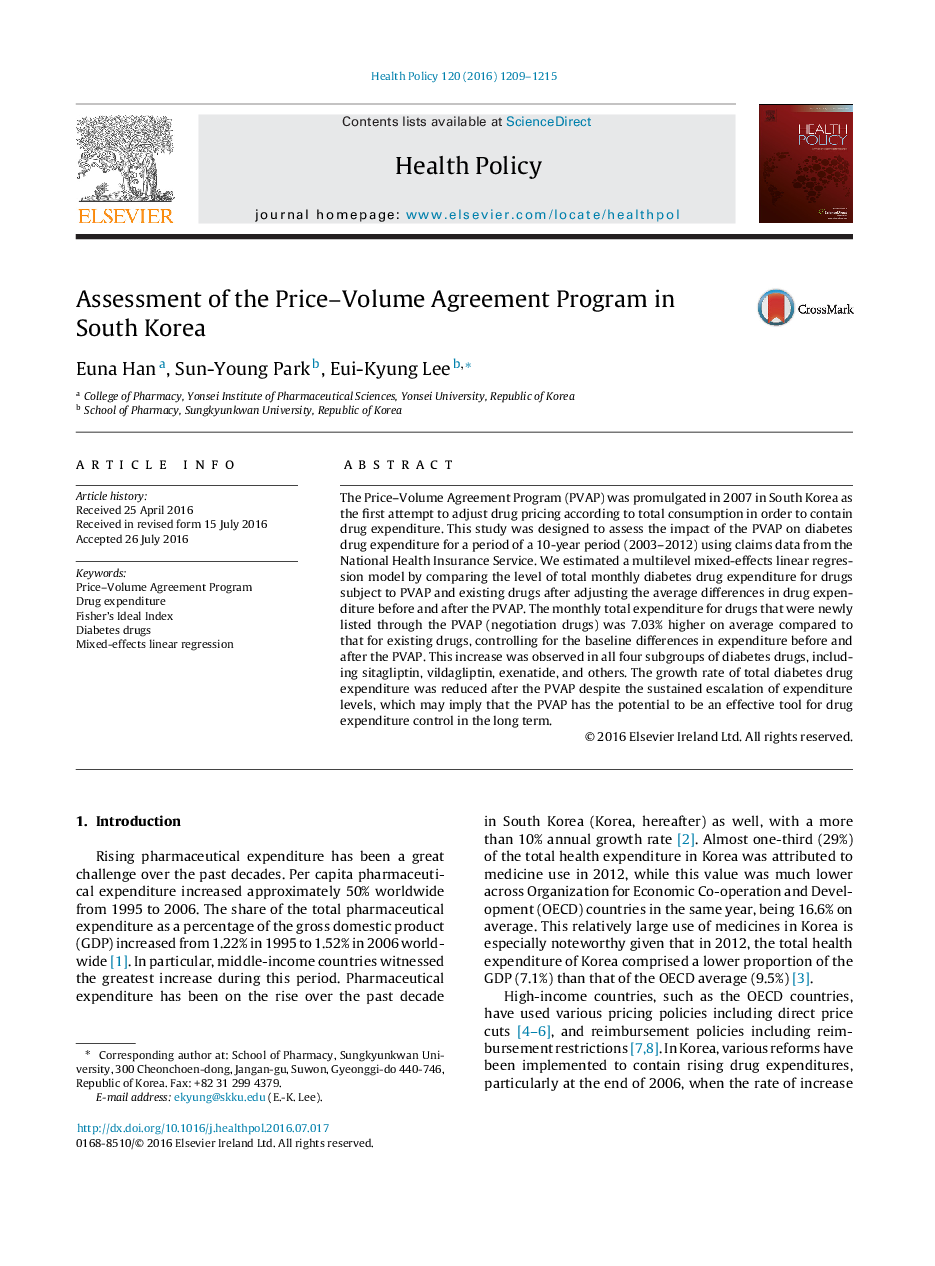| Article ID | Journal | Published Year | Pages | File Type |
|---|---|---|---|---|
| 5723400 | Health Policy | 2016 | 7 Pages |
â¢The impact of Price-Volume Agreement Program on diabetes drug expenditure was assessed.â¢We used National Health Insurance Service claims data for 2003-2012 in Korea.â¢We estimated a multilevel mixed-effects linear regression model.â¢Growth of volume explained most of the increase in total drug expenditure for diabetes.â¢The growth rate of total diabetes drug expenditure was reduced after the PVAP.
The Price-Volume Agreement Program (PVAP) was promulgated in 2007 in South Korea as the first attempt to adjust drug pricing according to total consumption in order to contain drug expenditure. This study was designed to assess the impact of the PVAP on diabetes drug expenditure for a period of a 10-year period (2003-2012) using claims data from the National Health Insurance Service. We estimated a multilevel mixed-effects linear regression model by comparing the level of total monthly diabetes drug expenditure for drugs subject to PVAP and existing drugs after adjusting the average differences in drug expenditure before and after the PVAP. The monthly total expenditure for drugs that were newly listed through the PVAP (negotiation drugs) was 7.03% higher on average compared to that for existing drugs, controlling for the baseline differences in expenditure before and after the PVAP. This increase was observed in all four subgroups of diabetes drugs, including sitagliptin, vildagliptin, exenatide, and others. The growth rate of total diabetes drug expenditure was reduced after the PVAP despite the sustained escalation of expenditure levels, which may imply that the PVAP has the potential to be an effective tool for drug expenditure control in the long term.
